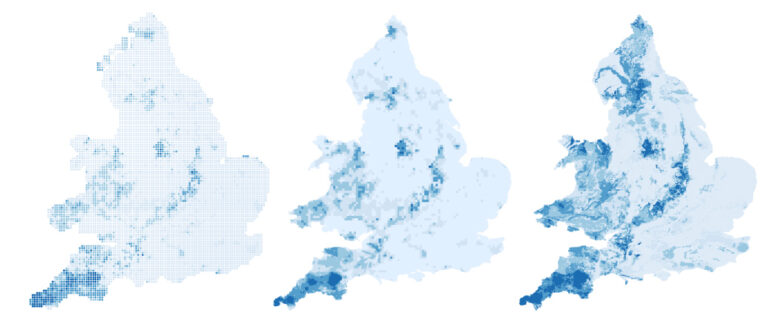The price of indoor air pollution: evidence from risk maps and the housing market

Download
This paper uses the housing market to examine the costs of indoor air pollution. The authors focus on radon, a common indoor air pollutant that is the leading cause of lung cancer after smoking.
The authors find a significant negative relationship between changes in published pollution risk levels – provided via the process of updating a radon risk map for England – and residential property prices: in other words, as published risk levels show an increase, prices decrease. However, decreasing risk does not lead to a rise in house prices.
The paper also shows that information provided by the updated risk map led residents in higher socioeconomic groups to move away from radon-affected areas and residents from lower socioeconomic groups took their place, attracted by the lower house prices.
The authors also calculate that the average willingness to pay to avoid the risk of indoor air pollution is 1.6% of a property’s price – this is the reduction in price that home-owners are willing to concede when selling a property that is affected by radon.
Key points for decision-makers
- The World Health Organisation estimates that indoor pollution is responsible for 2.7% of the global burden of disease and 3.8 million deaths every year. Indoor levels of pollution are in many cases higher than those outdoors.
- Radon is an odourless, colourless and tasteless common indoor air pollutant that is formed by the natural decay of uranium from rocks and soil. Radon exposure can cause lung cancer.
- Assessing the economic effects of indoor pollution is challenging for several reasons, including the fact that large data samples on indoor air pollution are rarely available and because exposure can lead to a wide range of observed or unobserved health and wellbeing costs.
- By focusing on radon and the housing market, the authors are able to address many of the challenges in the existing air pollution literature and provide compelling evidence that people buying and selling properties react to information about indoor air pollution related to radon.
- The results show that prices of houses affected by increases in radon risk decrease significantly, by around 1.6%.
- They also show that residents from higher socioeconomic groups move out of places that are newly known to be affected by radon, and that people from lower socioeconomic groups move in. These results thus highlight the disproportionate exposure of lower socioeconomic groups to indoor radon pollution.
- The paper also provides new evidence on how the housing market reacts to information about environmental risks and shows there is a problem of information mismatch. Mandatory information provision has a strong effect on household choices and, at least in the case of radon, prices react to the information about the risk, even when the actual level of risk has not changed.
- If more detailed health risk information could be provided, in particular distinguishing further than is done at present between the different radon categories and relative risk levels, this might prevent the depression of the housing market value.

